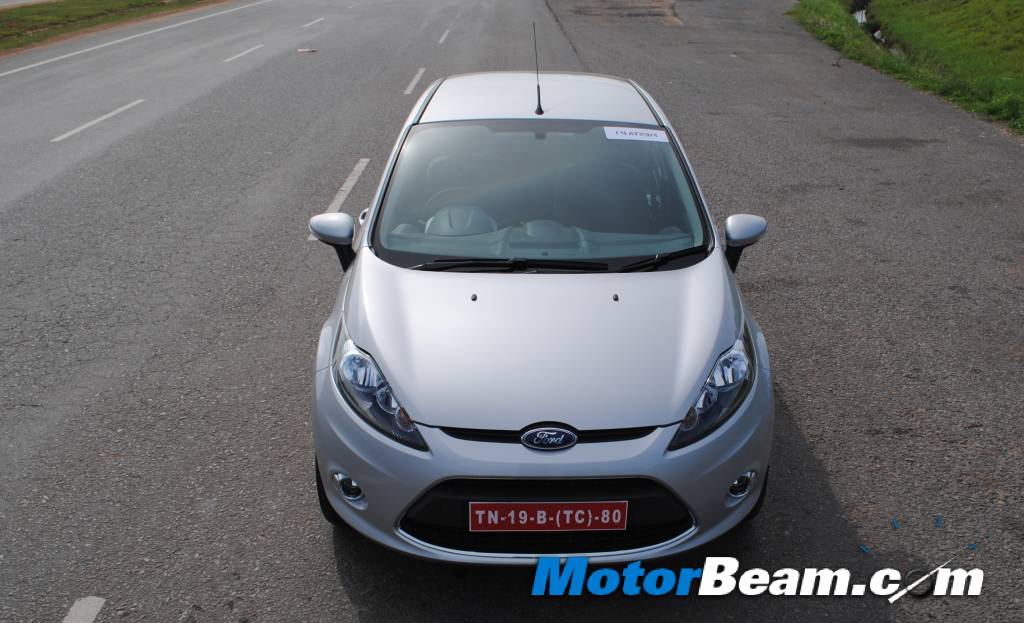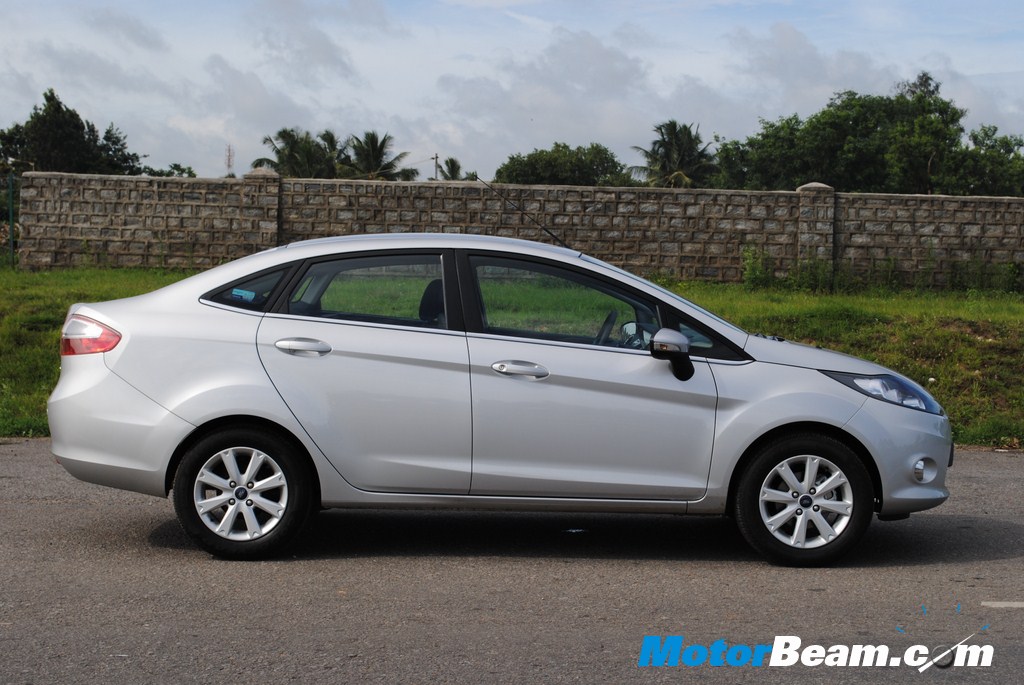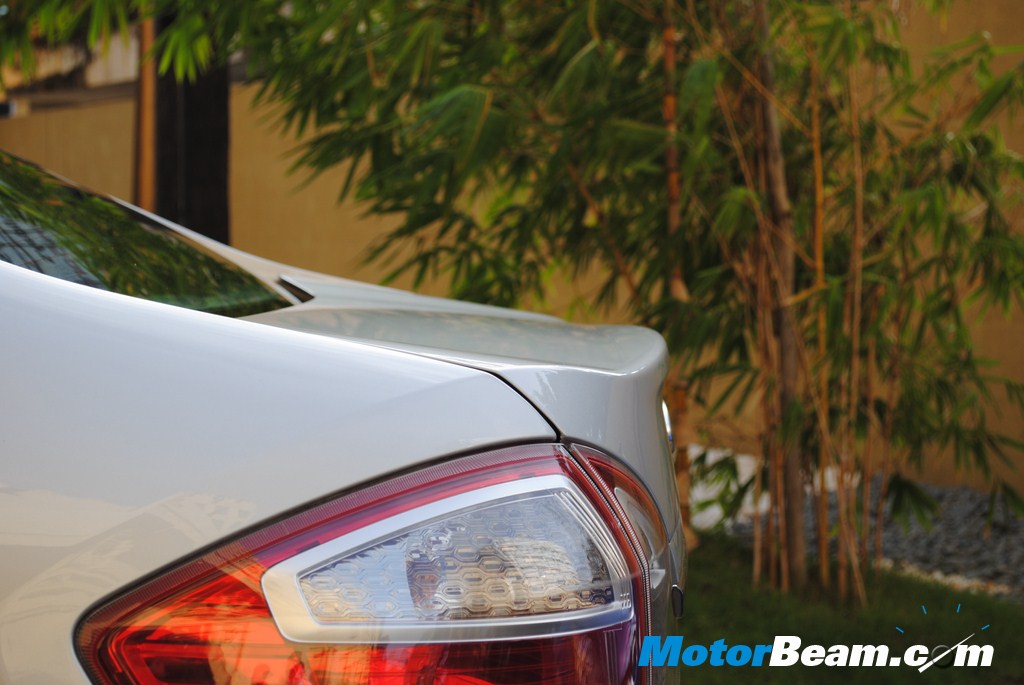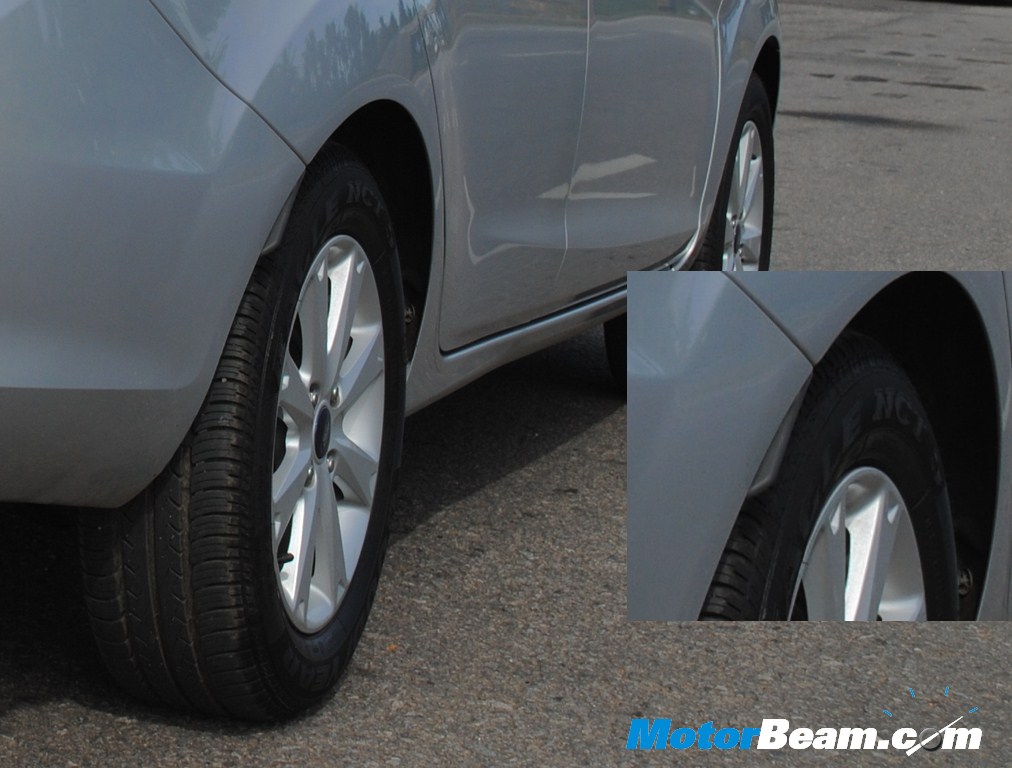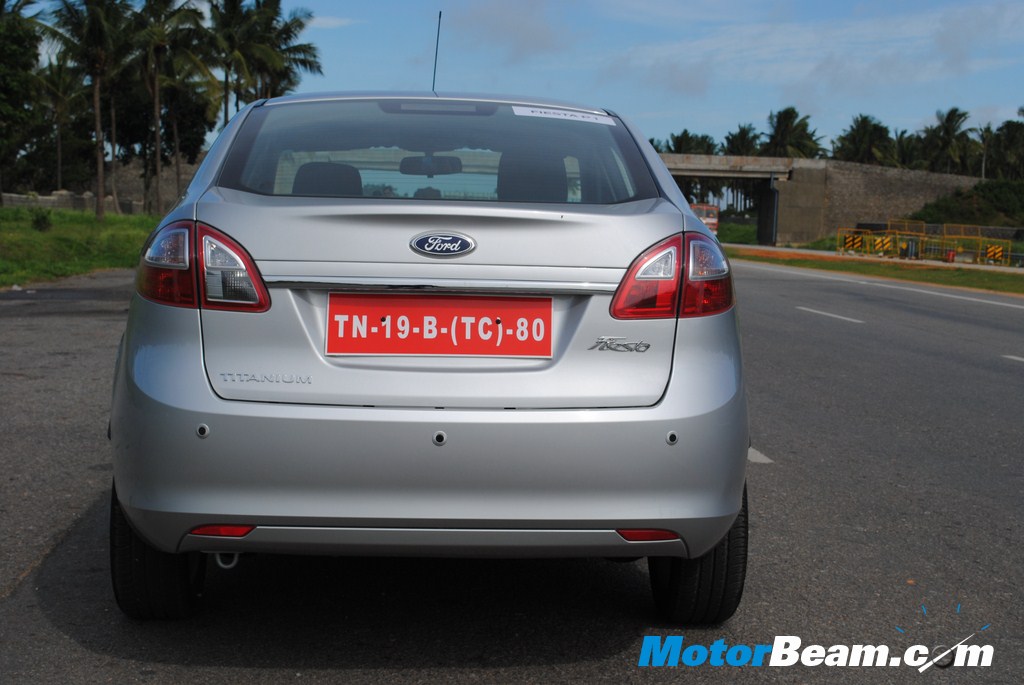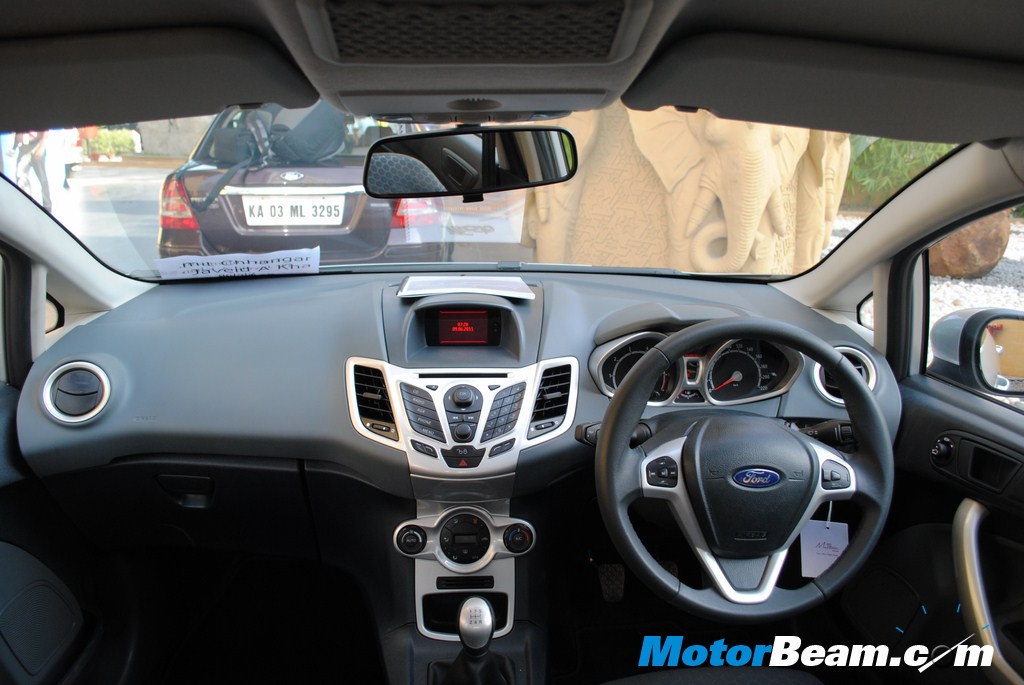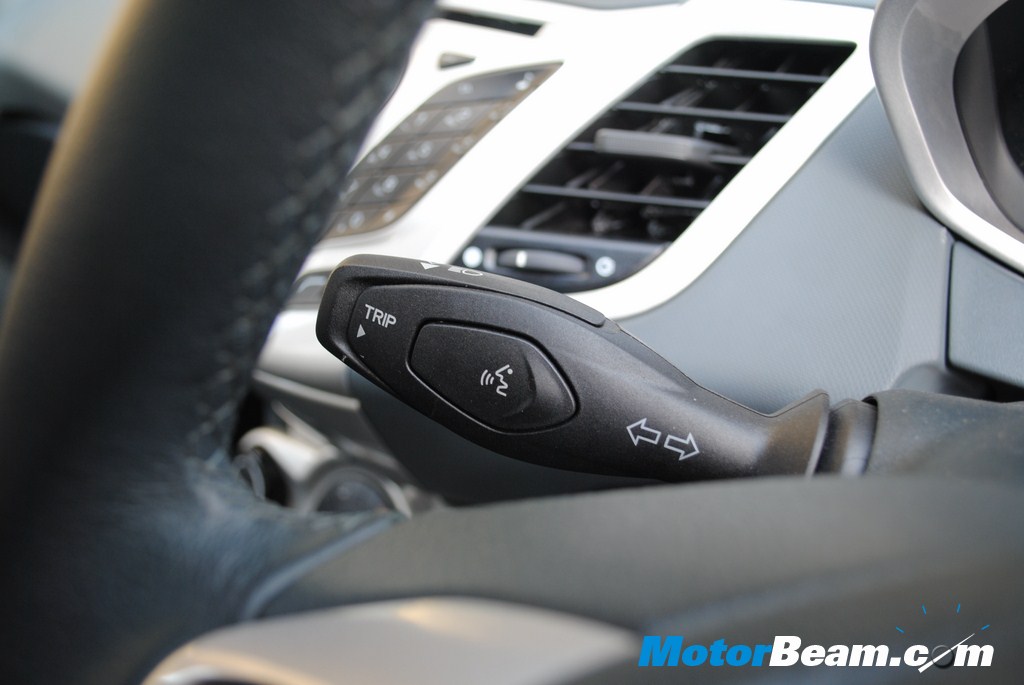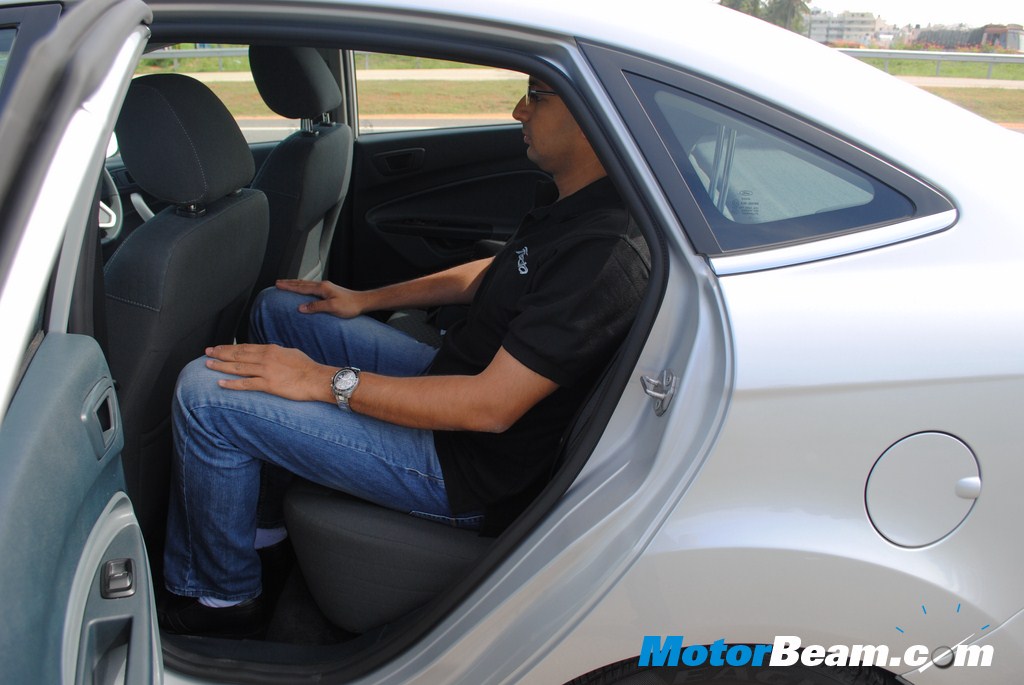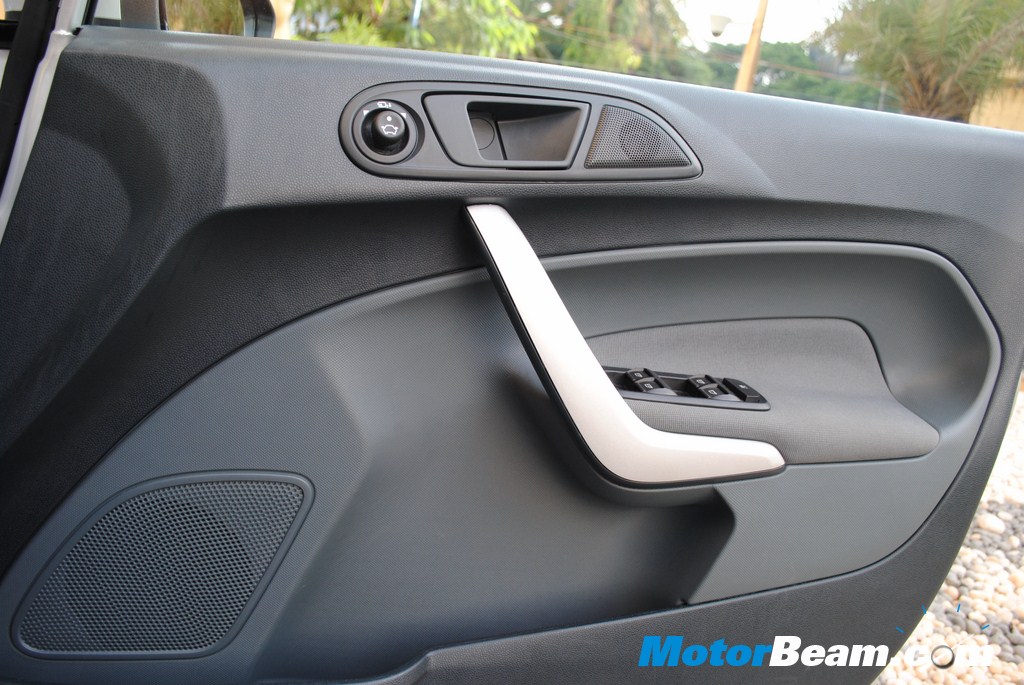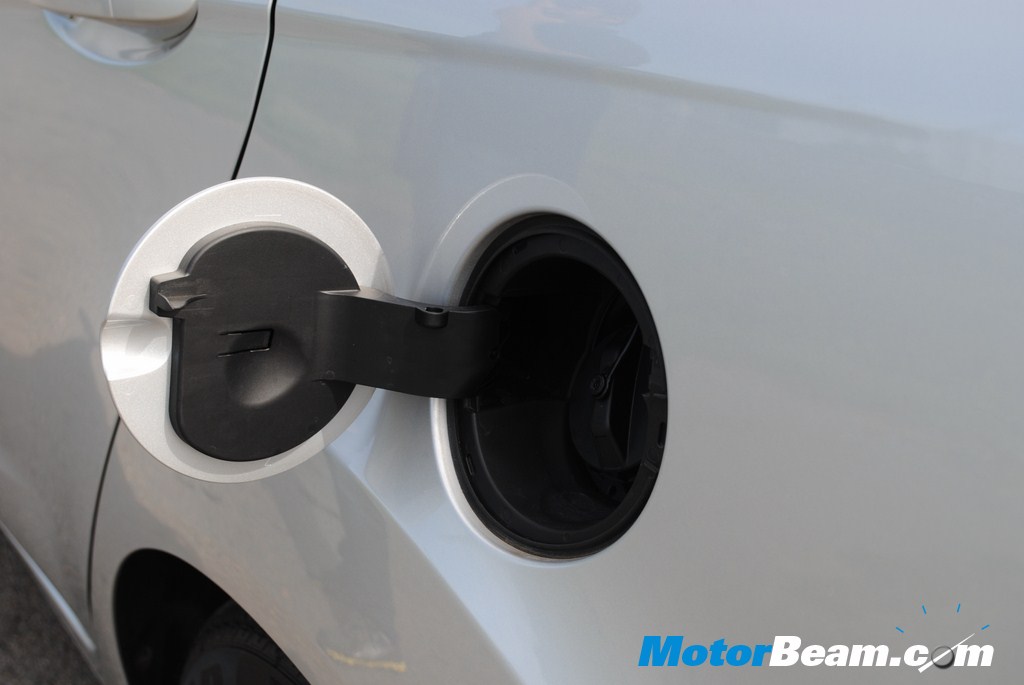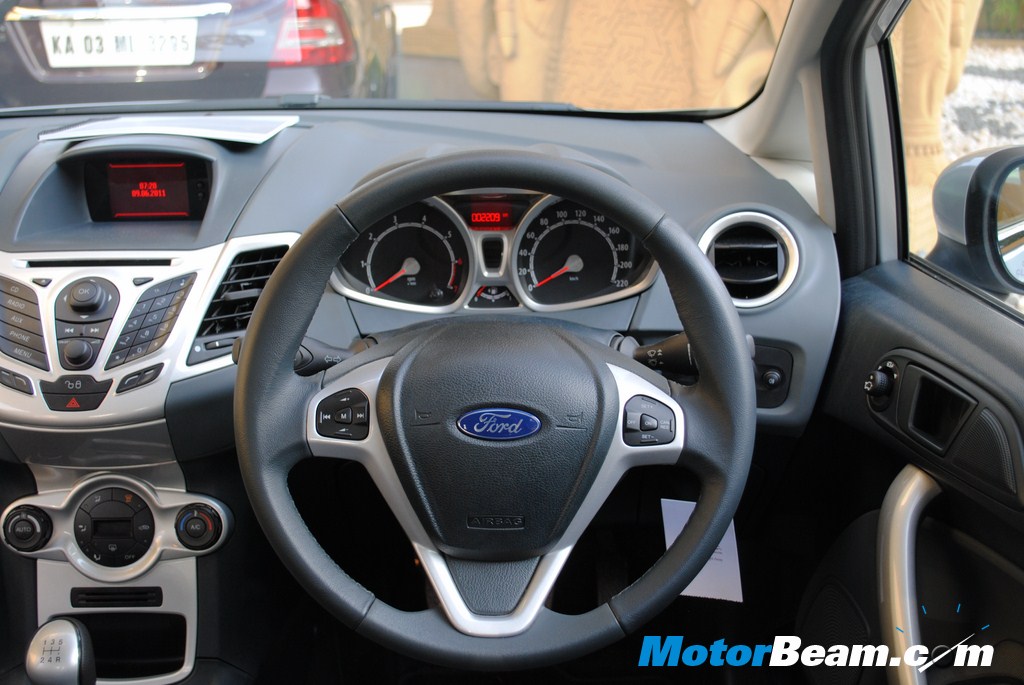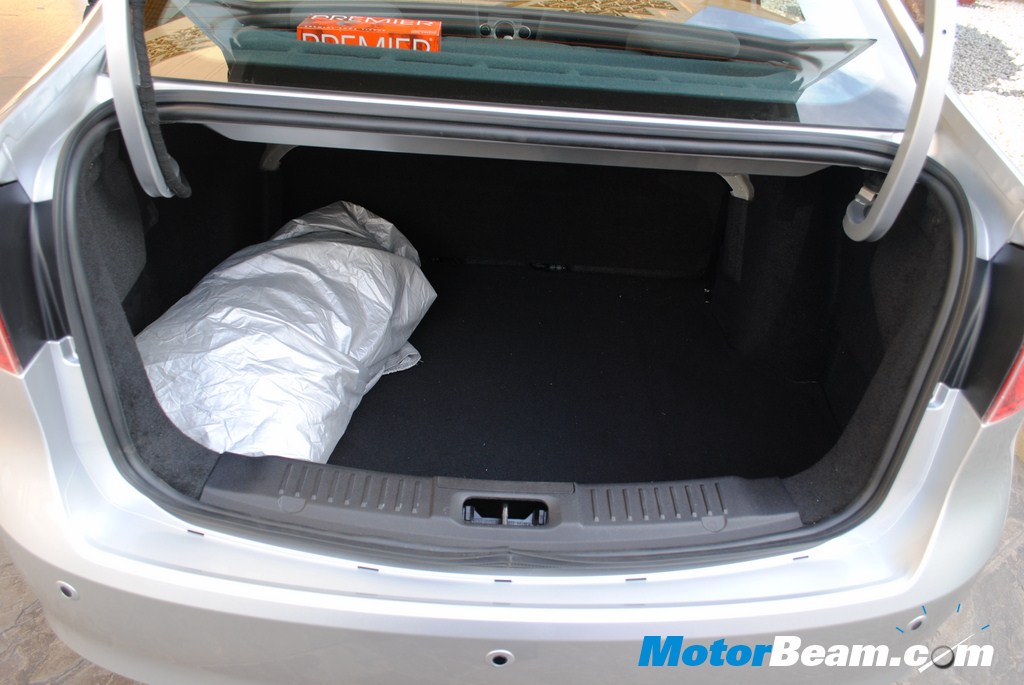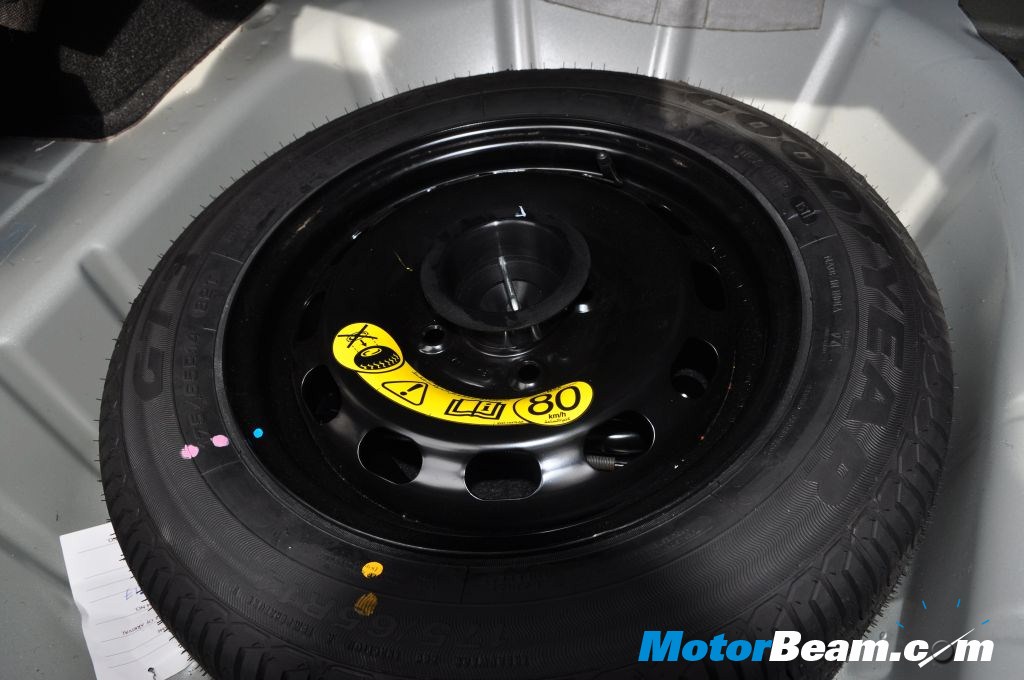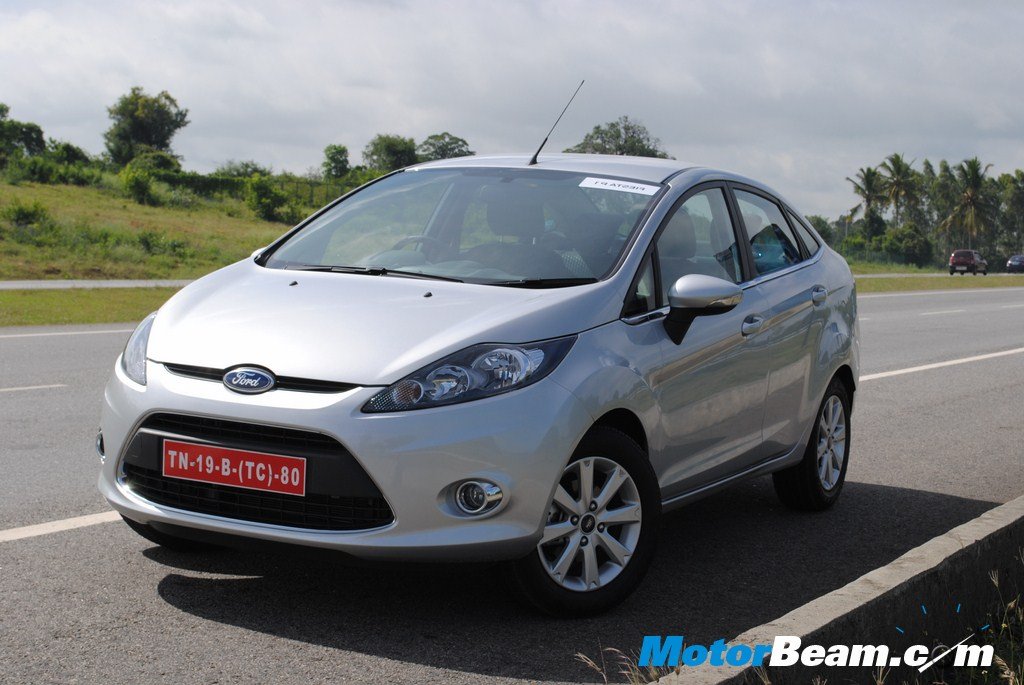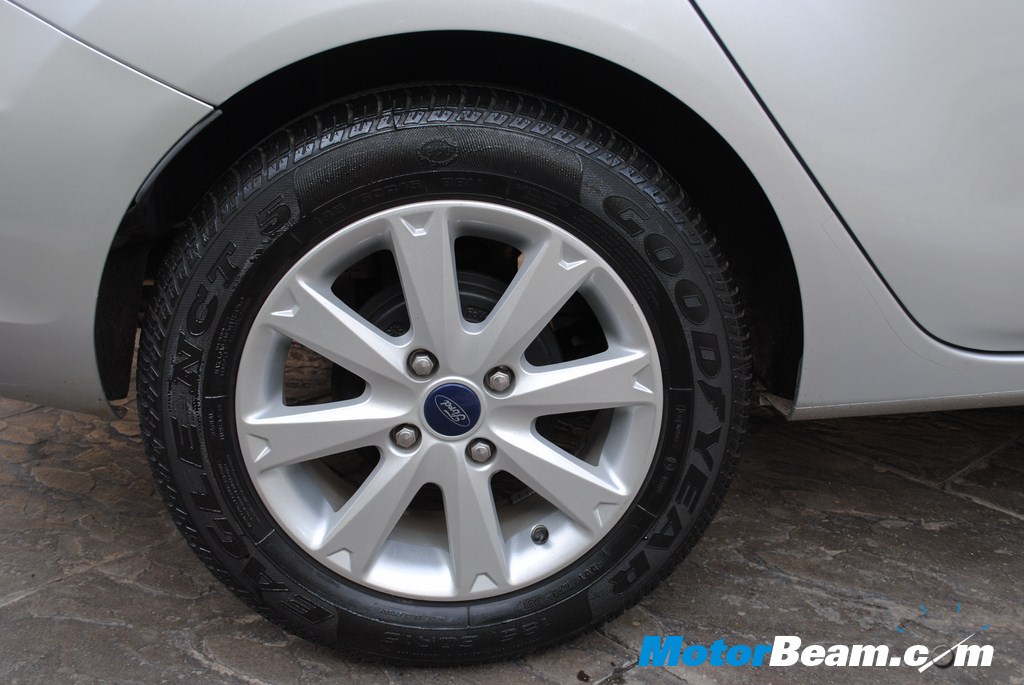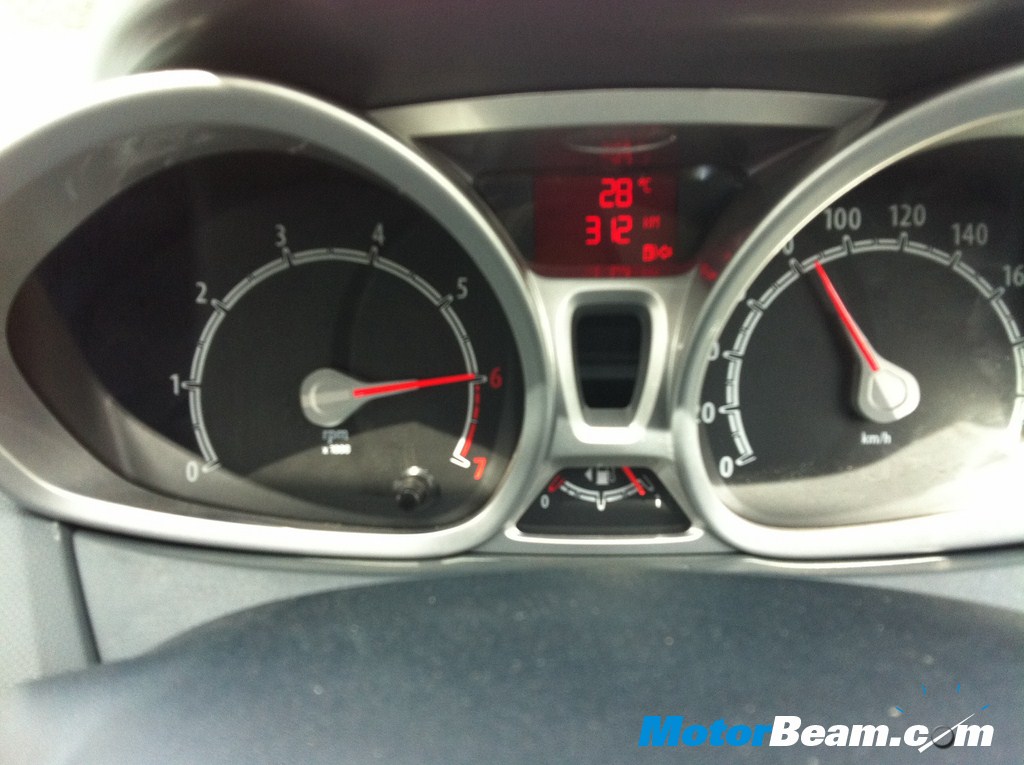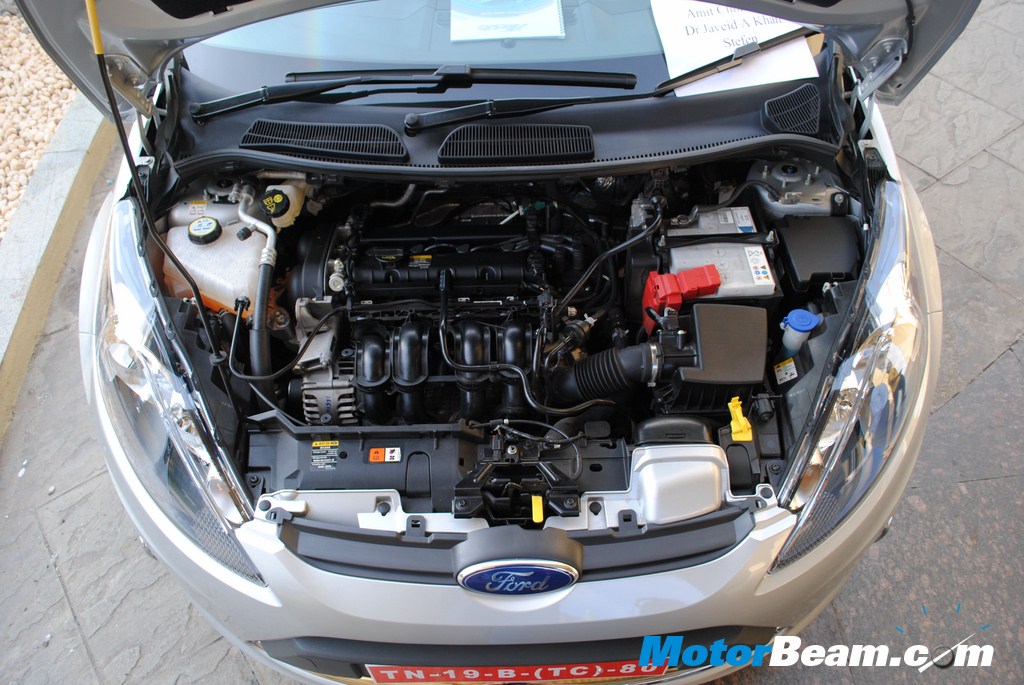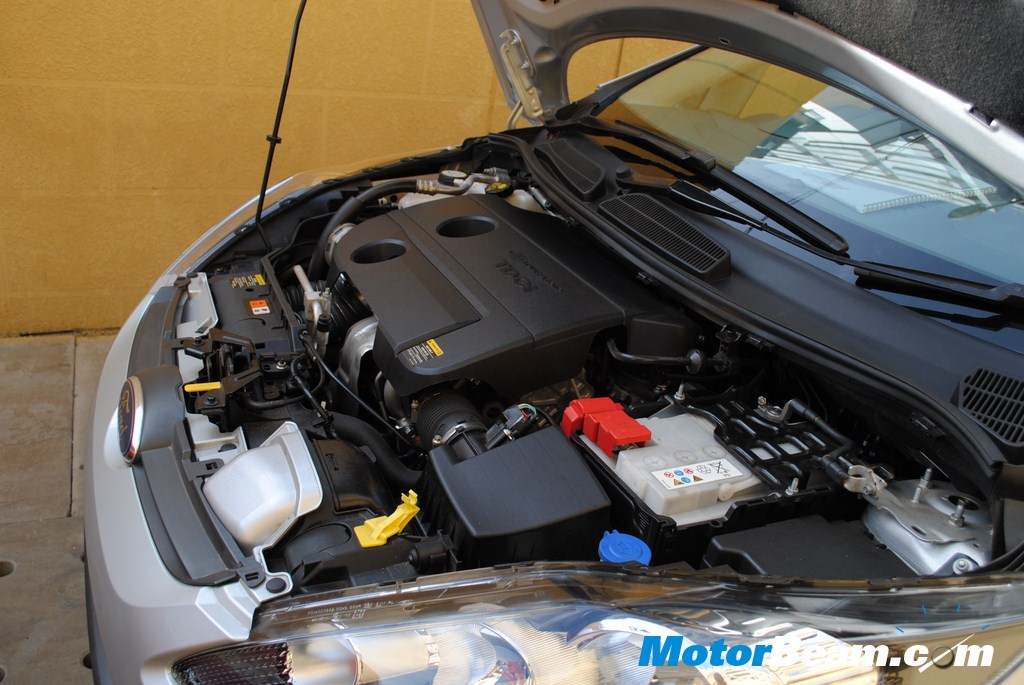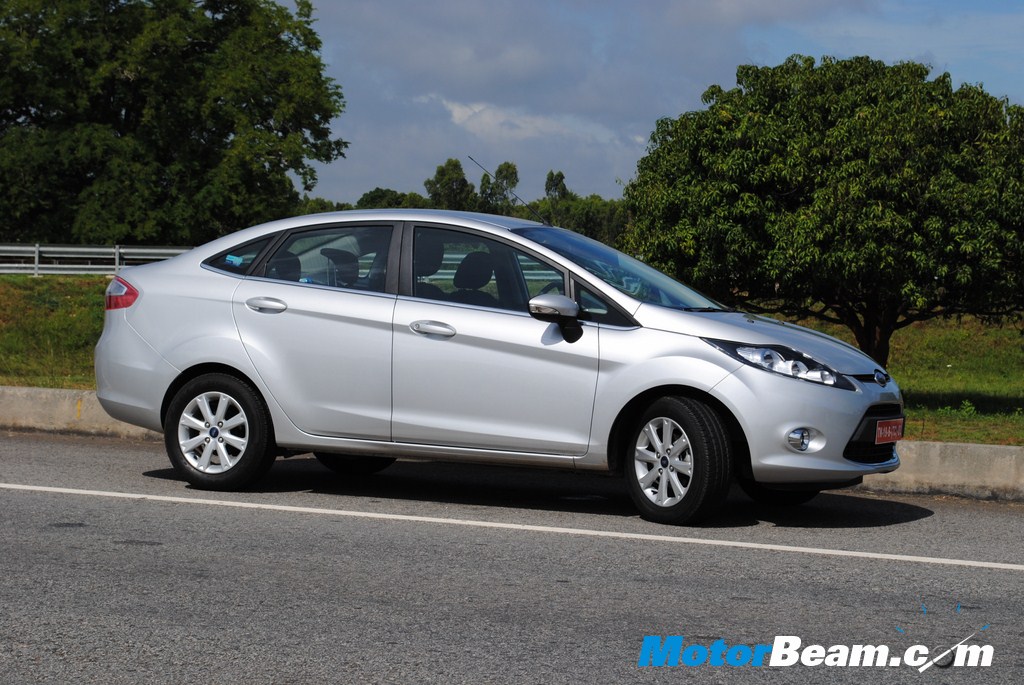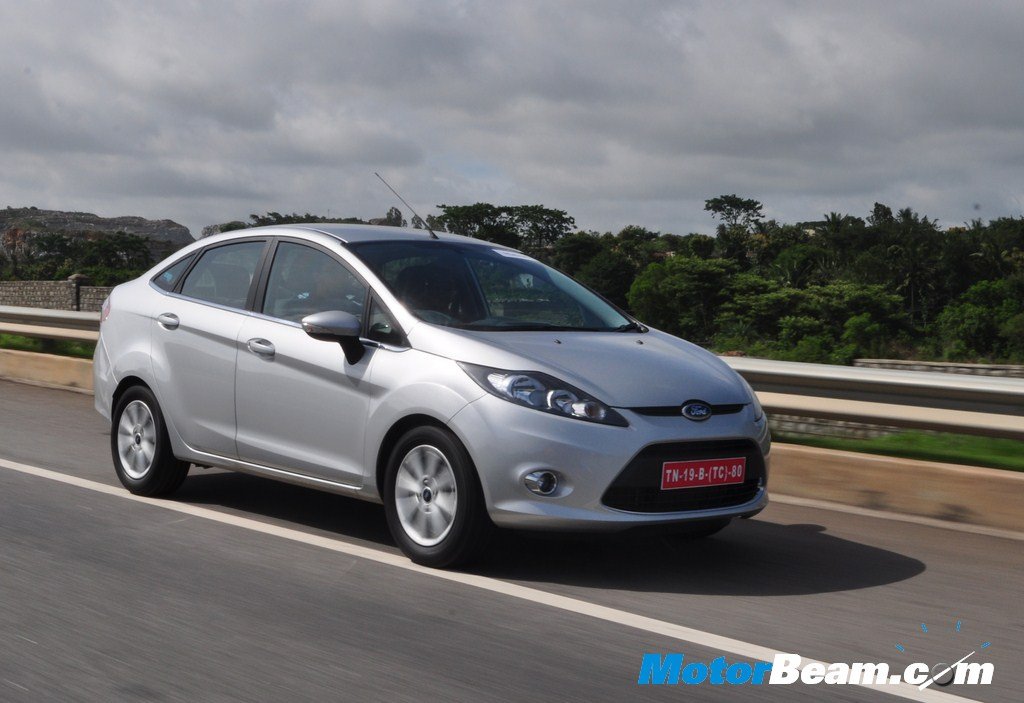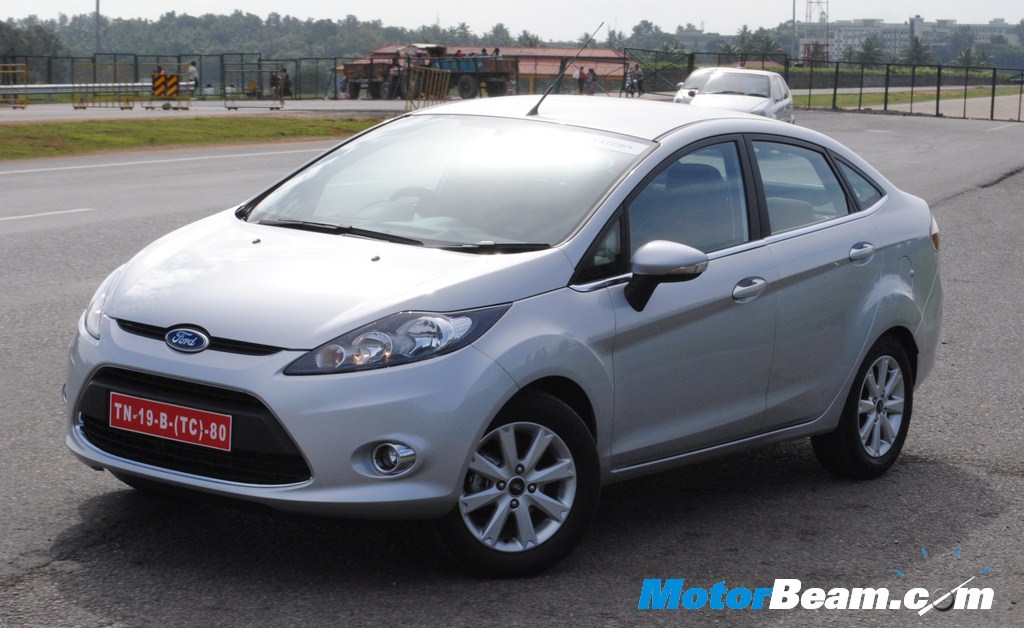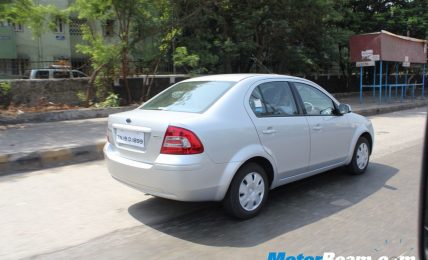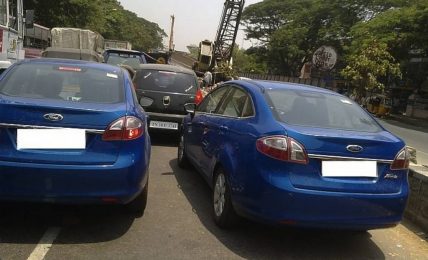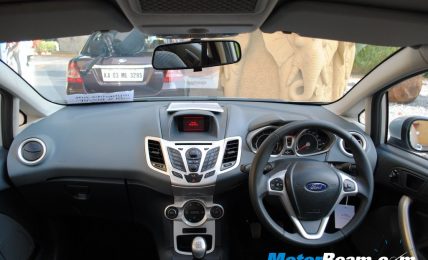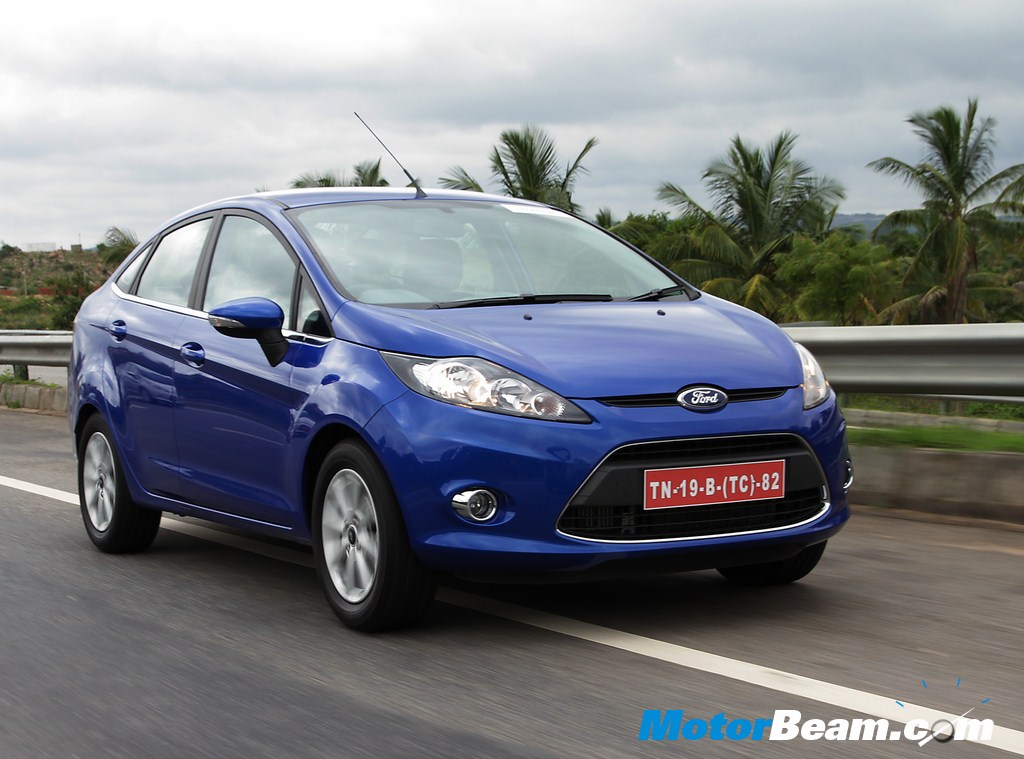
Car tested: 2011 Ford Fiesta Titanium+ (Petrol and Diesel)
Price OTR Mumbai: Rs. 11,00,706/- (petrol), Rs. 12,27,502/- (diesel)
Ford will be launching the 6th generation Fiesta in the next few months and invited us for a small Bangalore – Mysore run. We drove it to find out if the new Ford Fiesta will shake the upper end of the C-segment.
Exteriors – The new Fiesta has a kinetic design as Ford designers like to call it. The front get a hexagonal grille outlined with a crome strip and other area where crome is incorporated are the fog lamps and the line running along the glass area on the sides. Headlights are better appreciated with the darkened black surrounds in the headlight assembly.
The car gets a leaning forward look with sculpted sides and upward rising glass line from the front to the rear. The roof line gradually swoops into the boot giving it a coupe look. Alloy wheels looks good.
The new Fiesta has been extensively tested in the wind tunnel before the final design was passed. The sharp edges have been eliminated at the front by giving the headlamps a rounded appearance.The sculpted sides not only look good but minimize the coefficient of drag.
Even the boot incorporates a small spoiler which allows air to flow cleanly, reducing the drag. The top corners of the boot also slope sideways for the same purpose.
Look carefully and you will notice that a small piece of plastic juts out from the rear part of the rear wheel arch. We are told that it works for aerodynamic purpose and also completes the legal aspects of wheel coverage.
The rear is simply styled and similar to the front, it has been aerodynamically designed. Black parking sensors are placed on the rear bumper.
Interiors – The interiors are in sync with the kinetic design language. Grey and black interiors have the muti info display bang in the centre, which displays host of things right from music to other car parameters.
The audio system has average sound quality and supports Aux and USB input, which are conveniently located on the central console between the front passenger seats. Audio controls on steering wheel provided.
The first of it’s kind in the segment, the Fiesta has the Voice Control feature, the button for which is placed on the indicator stalk. A bluetooth enabled phone can be paired with the car and the voice button can be used to dial a number. It also works with the climate control and both temperature & blower speed can be adjusted by a series of preset voice commands.
Audio system volume along with input options (USB/AUX) can be toggled with this system. It does take some time to get used to the system and background sounds can confuse it to some extent. We realised that the system tends to go wrong when we tried the inputs in different indian accents, but works fairly well in the foreign english accent.
The front seats are comfortable and give all around back support, thigh support is good too. Come to the rear and its a bit disappointing. Headroom is fair considering the sloping roofline but thigh support is poor. Legroom is just average. In the above picture the front seat is adjusted to a six footer and there is just about average room at the rear.
Plastic quality is average but from a car which is positioned in the mid size premium segment, one would expect better. The door trims are sculpted to carry the kinetic design DNA on the inside. The power windows cluster is placed a little too behind and while driving its uncomfortable to reach for tall persons. We took up the case to Ford engineers and they pointed out that if it were to be more in front, the door trim would have to be too thick to accommodate the buttons.
The fuel lid did not mention the type of fuel, not to worry, we were driving pre production cars and all production models will clearly mention the type of fuel used.
The Fiesta is the only car in the segment to offer cruise control. The right set of buttons on the steering wheel are used to activate it. Once you switch on cruise control, a small light, barely visible in bright light, will be seen on the instrument cluster. Speed can be increased or decreased by the +/- button. This feature comes handy on open highway stretches.
The new Fiesta has a more rigid body structure and high strength steel is used to improve rigidity and structural strength while reducing weight at the same time, thereby increasing safety without compromising on fuel efficiency due to increased weight.
Another point which had us impressed were the low NVH levels. Its extremely quiet inside the cabin and Ford has used wind noise optimized grills for reduced noise along with an acoustic laminated windshield for lower NVH levels. Sound absorbent material is used in the cabin and revised door seals reduce wind noise. The body framework along with good damping ensures there are no rattles whatsoever.
Boot space measures 430 liters. Rear seats can be folded completely to accommodate more luggage.
Space saver as a spare. Cost cutting?
Ride, Handling and Braking – The Fiesta has undergone a few modifications for India. The suspension has been tuned to Indian driving conditions, its neither too soft nor too stiff but somewhere in the middle. The Diesel gets a slightly stiffer tune up. Ride quality therefore is good, like most Ford cars. We were impressed with the Handling of the car as well, the earlier version (Fiesta Classic) was a great handler and the new one is on the same lines.
Ground clearance has been increased by 15 mm. Ford has done that by increasing the tyre profile (195/60/15) rather than working on the suspension. The brake pedal feel has been again modified for India due to constant stop/go traffic. Dab the brake pedal and there is a certain amount of play before it takes action, unlike the European version where there is far more play and the braking action is too sharp. With constant stop/go situations, this modified brake feel makes things easier for the driver. All said and done, the Fiesta stops without any ruckus and ABS and EBD have their own role to play in doing so.
Performance – The Fiesta comes with two engine options for the Indian market, the 1.5 ltr Petrol and the 1.5 ltr Diesel. Both these engines have made their global debut in India. Ford has taken measures to keep the weight of these engines as low as possible and have also worked to reduce emmisions.
The 1.5 liter Duratec Ti-VCT petrol engine gives out 110 BHP @ 6045 RPM & 140 NM of Torque @ 4500 . Its evident that Ford has tuned the engine for a better fuel efficiency considering the rising fuel prices. Though it does a 0 – 100 sprint in less than 11 seconds, a few more horses would have certainly improved the overall driveablity. To get the optimum out of this engine, one has to shift at the rev limiter and downshifting often to overtake on the highway. In gear acceleration is strictly average. We did not get a chance to check its real time fuel efficiency but ARAI figures are an impressive 17 kmpl.
The 1.5 liter Duratorq engine punches out 91 BHP @ 3750 RPM and a torque of 204 NM @ 2000 – 2750 RPM and gives an overall better driving experience than its petrol sibling. A hint of turbo lag exists till about 1800 RPM and from thereon you have linear power delivery with excellent driveability and in gear acceleration. It does a 0 – 100 run in less than 14 seconds, which is about 3 seconds off the petrol engines pace but, unanimously, all the journalists on the drive chose the diesel over the petrol. In city conditions, the clutch felt a bit heavy but apart from that it was fun to drive. We stretched its legs upto 160 kmph but did not get a chance to test the upper limit. ARAI figures are an astounding 23.5 kmpl, which is the best in the segment so far.
Hydraulic steering has been replaced with an electronic one which has an unique ‘Pull Drift Compensation’ feature. The extremely steering is light at low speeds with excellent feedback at high speeds. The steering response increases with speed, that is, at higher speeds, it does not feel as light as it would a lower speed. The Fiesta is a drivers car and Diesel version is going to make sure you dont sit anywhere but the drivers seat. We found the steering to be lighter on the diesel version, making for good maneuverability in crowded city roads.
The ‘Pull Drift Compensation’ feature constantly measures the driver’s steering input, adapts to changing road conditions and helps compensate for slight directional shifts caused by factors such as crowded roads and cross winds. In practical terms, the steering feels lighter after the first input, hence you dont end up fighting with it in crowded situation. A practical and useful feature, but we are not sure whether an average driver will even notice it until told.
Conclusion – The new Fiesta is a promising prospect and is a pure drivers car. It’s a good handler and the diesel engine gives great performance without eating into its efficiency. The petrol engine may not appeal to the petrol head but makes sense for those who want good mileage with paying a premium for the diesel power plant. With many options available in the segment, it will ultimately come down to pricing . Ford has done it with the Figo and they are very likely to do it again with the Fiesta. If they price it competitively, there is no reason why the Fiesta wont sell.
Whats Cool
* Sporty Looks
* Ride & Handling
* Diesel Engine – Performance and Fuel Economy
* 2 years and 1,00,000 km warranty
* Lowest NVH (Noise, Vibration & Harshness) across the segment
Whats Not So Cool
* Plastic quality
* Petrol engine not for the performance oriented.
* Rear seat legroom


